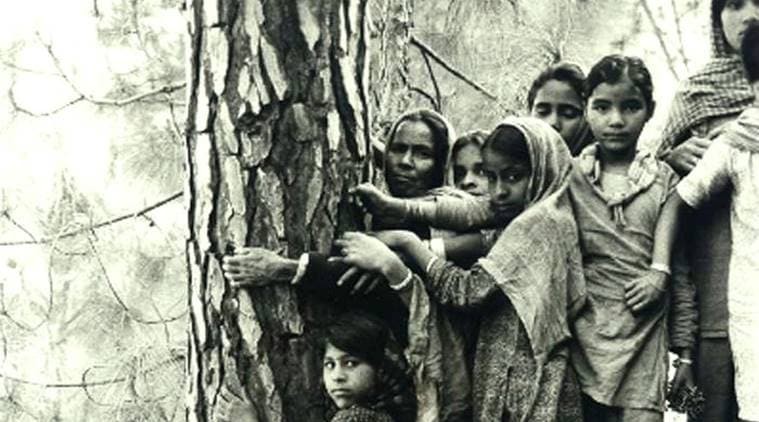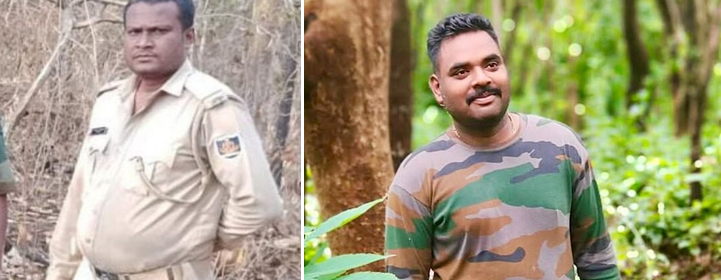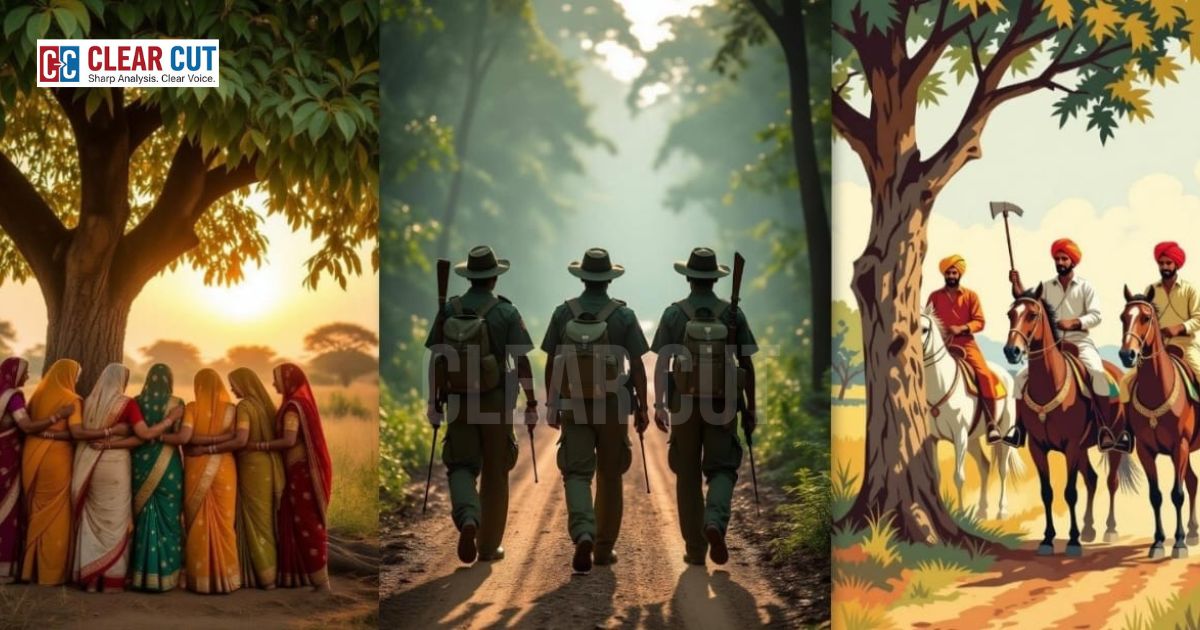Photo Credit: Antara Mrinal
Clear Cut Livelihood Desk
New Delhi, UPDATED: Sep 11, 2025 04:09 IST
Written By: Antara Mrinal
Each year on the 11th of September, the entire population of India holds in remembrance those unknown heroes that lost their lives protecting forests and wildlife. National Forest Martyrs Day was introduced in 2013, but it is more than just a day on the calendar. It reminds us, of our often-overlooked, significant connection to nature, not only had how many individuals devoted their lives to saving it but also the many that lost their lives.
The Roots of Observance
The date of 11 September commemorate the martyrdom of Amrita Devi Bishnoi and the other 360 Bishnois, that were killed by Maharaja Abhay Singh of Marwar’s royal army in the village of Khejarli, which is located near Jodhpur, Rajasthan in 1730. The Bishnois, who referred to themselves as “forest martyrs”, are people with a 29-point code of living and are followers of Guru Jambheshwar (or Jambhoji). This code included caring for and protection of all life forms down to trees. When the soldiers came to cut down the Khejri trees for wood to build the Maharaja’s palace, Amrita Devi hugged a tree and stated:
“A chopped head is cheaper than a felled tree.”
She was killed there and then but her act inspired numbers of Bishnois – men, women and even children to do the same. By the end of the massacre, 363 were laid to rest. It was so tragic, that the murder martyrdom compelled the royal to cut off the deforestation and their legacy still inspires environmental movements today.
Echoes Through Time: Other Forest Movements
The Khejarli sacrifice is inspired for what we would term India’s first ecological revolution. Centuries later, the comprised Bishnois spirit would make a resurrection in the Chipko Movement of the 1970s in Uttarakhand. Villagers, encouraged by others in similar movements, like Sundarlal Bahuguna, Chandi Prasad Bhatt and Gaura Devi, would hug trees so that loggers could not chop it. Not only did the Chipko Movement demonstrate the strength of local communities which brought about global awareness concerning community-driven local environmental conservation, they caught the massive attention of the state and multi-national corporations stealing more land from nature.

Photo Credit: The Indian Express
The Bishnois would, through their sacrifice provoke the Indian state and would echo through time to every modern matter of conservation battles that would stretch across India, from the Silent Valley protests in Kerala to the Narmada Bachao Andolan. And so, on National Forest Martyrs Day we find a link, a chain of resistance and resilience, from Khejarli to contemporaneous conservation battles.

Photo Credit: The Caravan
Modern Martyrs: Brave Faces, Rising Toll
Many of those at the front lines of the forest or rangers, are impacted by the spirit of the Bishnois and the Chipko movement, making brave but often dangerous choices and sacrificing their lives for India’s forests and green spaces. The numbers are sobering. In the period from 2012 to 2017, India had 162 of the 520 ranger deaths globally, almost a third of all ranger deaths worldwide while on duty.
In Asia, one of the most dangerous continents for frontline forest or rangers, these ranger deaths can be the result of confrontations with poachers, conflict with wild animals, the risk of varied terrain, and even health emergencies.
These risks are constant. In 2023, in Odisha’s Similipal Tiger Reserve, two forest staff, a guard and ranger, were each shot and killed by poachers in just a few weeks and there were calls for additional safety protocols. A forest guard named Prahlad Pradhan was recently murdered in May 2025 by poachers after a violent confrontation in Dhenkanal District, Odisha, only praying for reinforcements moments before being killed.

(From left) Mati Hansdah, forester in Upper Barahakumuda range was killed by poachers in Odisha’s Similipal Tiger Reserve in 2023 | Photo Credit : Angikar and Prahlad Pradhan, forest guard, shot dead by poachers during routine patrolling in Hindol Forest Region, Odisha | Photo Credit : The News Insight
These recent martyrs are typically unnoticed outside of local stories, headlines but their experiences echo the courage of Amrita Devi, and others who defended forests so long ago with similar matters of personal sacrifice. Regardless of if they were shot by poachers, mauled by a tiger or killed in an accident, the meaning of these losses is significant. Their collective sacrifice requires our recognition and improving action measures to protect those who have dedicated their careers/existence to protect nature.
Symbolism and Meaning
The significance of the day lies in the reminder that conservation has always required courage. The Bishnois did not die for trees, they died for the balance of nature and life as it relates to ecology. Given our enemies today, including climate change, and deforestation, and loss of biodiversity, there is an urgency to the Bishnoi’s story.
Today, ceremonies are held across India, in honor of the fallen forest personnel. Events organized or supported by the Ministry of Environment, Forest and Climate Change (MoEFCC) are held where the names of the forest martyrs are read aloud and their families are recognized. On this day, awareness campaigns take place in schools and colleges with the aim that the next generation is aware of the value of forests outside of economic value.
Lessons for the Future
National Forest Martyrs Day does not only signify remembering the past; it encompasses preparing for the future. The sacrifice of Amrita Devi and the other Bishnois reminds us that environmental protection is about survival, not an option. As India continues to meet its climate commitments and seeks to restore ecosystems that have been degraded, that spirit must find its way into policy, as well as our daily decisions. Whether that be planting trees, reducing waste, safeguarding wildlife corridors or honoring Indigenous knowledge – there is an endless list of ways which we can honor their legacy today. Ultimately, it reminds us of the relationship between forests and human life.
When the world is in trouble because of the environmental catastrophes we are now facing and the story of 11 September 1730 stands out in the world as a guiding light, where a semblance of a small desert village made the world aware that even ordinary people, with faith and conviction, could come together to oppose power and defend nature. On this National Forest Martyrs Day, we remember Khejarli martyrs, salute forest guards who still risk their lives, and pledge to be guardians of the green; because every tree we save, we celebrate their spirit.
With inputs from:
- Sanctuary Nature Foundation
- IUCN Parks Journal
- Mongabay India
- Times of India





Thank you for your sharing. I am worried that I lack creative ideas. It is your article that makes me full of hope. Thank you. But, I have a question, can you help me?